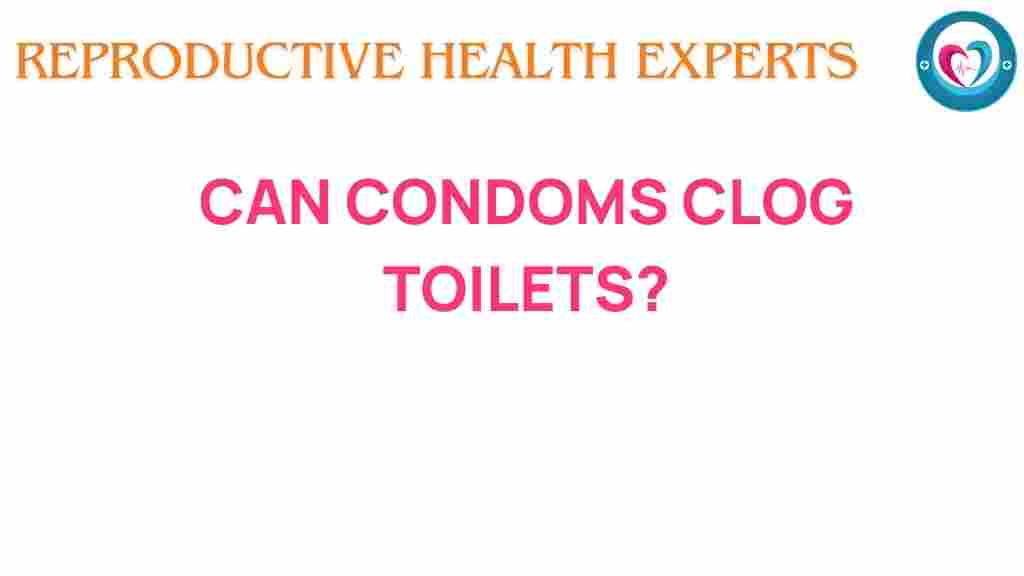The Hidden Dangers: Can Condoms Clog Your Toilets?
When it comes to bathroom hygiene and sanitation, many people might overlook the impact of certain items we flush down our toilets. One of the most surprising culprits? Condoms. While they are an essential tool for safe sex, they can pose significant risks to plumbing and waste management systems. In this article, we’ll explore how condoms can clog toilets, offer bathroom tips to prevent such issues, and discuss the broader implications for home maintenance and environmental impact.
Understanding the Problem: How Condoms Affect Plumbing
Condoms are typically made from latex or polyurethane, materials that are not biodegradable and can create serious plumbing problems when flushed down a toilet. Here’s how they can cause issues:
- Blockages: Condoms can easily become lodged in pipes, leading to severe toilet clogs that require professional plumbing intervention.
- Waste Buildup: When condoms accumulate in sewage systems, they can mix with other waste materials, exacerbating blockages and causing backups.
- Environmental Impact: Flushing condoms contributes to pollution in water systems, as they do not break down and can harm wildlife.
The plumbing system in your home is designed to handle human waste and toilet paper, not foreign objects like condoms. Thus, understanding the risks associated with flushing condoms is essential for maintaining a functional and sanitary bathroom.
Bathroom Tips for Responsible Condom Disposal
To avoid costly repairs and maintain a clean and safe environment, it is crucial to dispose of condoms properly. Here are some bathroom tips to ensure responsible waste management:
- Use the Trash Bin: Always dispose of used condoms in a trash bin. Consider keeping a small, discreet container in your bathroom specifically for this purpose.
- Educate Your Partner: Make sure that everyone who uses your bathroom understands the importance of not flushing condoms.
- Seal Before Disposal: Wrap used condoms in toilet paper or place them in a small bag before throwing them away to minimize odors and maintain hygiene.
Step-by-Step: How to Properly Dispose of Condoms
Proper disposal of condoms is straightforward. Follow these simple steps:
- After Use: Once you have finished using the condom, carefully remove it without spilling its contents.
- Wrap It Up: Wrap the condom in toilet paper or place it in a small plastic bag to contain any odors and prevent direct contact.
- Trash It: Place the wrapped condom in the trash bin. Do not attempt to flush it down the toilet.
Troubleshooting: What to Do If Your Toilet Clogs
Despite your best efforts, you may still encounter a toilet clog. If you suspect that a condom is the cause, here are some troubleshooting tips:
- Stop Flushing: If you notice a clog, stop flushing the toilet immediately to prevent water from overflowing.
- Check the Water Level: Open the tank and check the water level. If it’s too low, avoid flushing to prevent further clogs.
- Use a Plunger: A plunger can be effective in dislodging minor blockages. Make sure to create a good seal and plunge vigorously.
- Snake the Drain: If plunging doesn’t work, consider using a plumbing snake to reach deeper clogs. This tool can help break up the blockage.
- Call a Professional: If the clog persists, it’s time to contact a plumber. They have the tools and experience to handle more severe blockages.
Long-Term Effects: The Environmental Impact of Flushing Condoms
Beyond immediate plumbing issues, flushing condoms has a long-term environmental impact. Here are some considerations:
- Pollution: Condoms contribute to plastic pollution in oceans and waterways, affecting marine life and ecosystems.
- Waste Management Costs: Increased clogging in sewage systems leads to higher maintenance costs, which can ultimately affect local waste management budgets.
- Public Health Risks: Blockages can lead to sewage overflows, posing health risks to communities and damaging local environments.
By understanding the environmental impact of our actions, we can make better choices regarding sanitation and waste management in our homes.
Conclusion: Protecting Your Plumbing and the Environment
Condoms are crucial for safe sexual practices, but they should never be flushed down the toilet. The risks associated with flushing condoms, including plumbing issues and environmental damage, are significant. By following the proper disposal methods and educating others, you can protect your home’s plumbing and contribute to better waste management practices.
Remember, maintaining a clean and functional bathroom is an essential part of home maintenance. For more tips on keeping your bathroom in top shape, check out our home maintenance guide.
In conclusion, be mindful of what you flush. By taking small steps to ensure proper disposal, we can make a significant impact on our plumbing systems and the environment.
This article is in the category Prevention and created by ReproductiveHealthExperts Team
